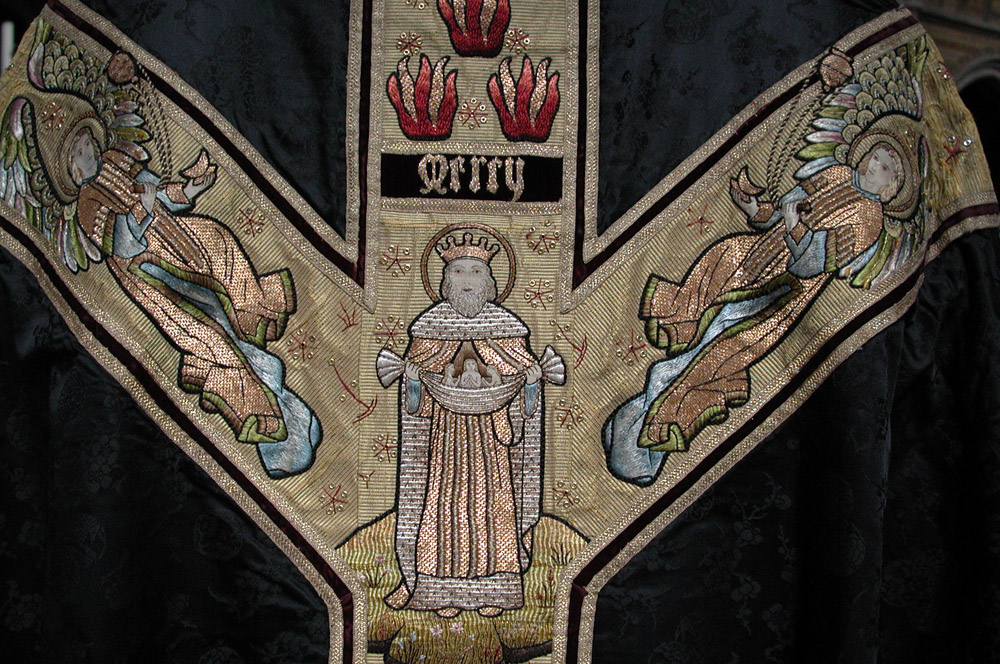

Embroidery on a black chasuble at St Augustine's Church, Kilburn, London NW6.[Click on the images to enlarge them.]


Black was not always the liturgical colour associated with mourning: "It is doubtful how far it was a funeral colour in early ages" (Legg 92). Yet the Victorians certainly adopted it as such. It is "used for funerals and other Services for the dead," explains "H.H.J." in his 1884 booklet about the church, evidently describing this very chasuble:
The chasuble shows Abraham with souls in his bosom. Lower down, an angel is carrying a soul into Paradise . Tongues of fire recall Pentecost, and show that “fire which shall try every man's work,” and with which, as sacrifices, we shall be salted (S. Mark ix. 49); that fire of the Breath of the Lord, which will cleanse us from all sin, and so kindle us that we may be "fit to dwell with Him whose feet are like unto fine brass, as if they burned in a furnace" (Rev. i. 15.). Angels are swinging their censers , to sanctify with the sweet savour of Christ the souls who are being brought into rest. The dalmatic and tunicle are likewise covered with the holy Fire. [30]

The embroidery as usual is exquisite, especially so in contrast to the background colour. Every detail is carefully thought out — note, for example, the varied pastels of the angels wing-feathers. The figures are punctuated by the cry, "Jesu Mercy."
Photographs by John Salmon, with thanks to St Augustine's Church; text by Jacqueline Banerjee. You may use the images without prior permission for any scholarly or educational purpose as long as you (1) credit John Salmon and (2) link your document to this URL in a web document or cite the Victorian Web in a print one.
Related Material
Bibliography
Legg, Dr. J. Wickham. "Notes on the History of the Liturgical Colours." Transactions of St Paul's Ecclesiological Society. 1885. 95-134. Google Books. Free Ebook.
Created 27 April 2021